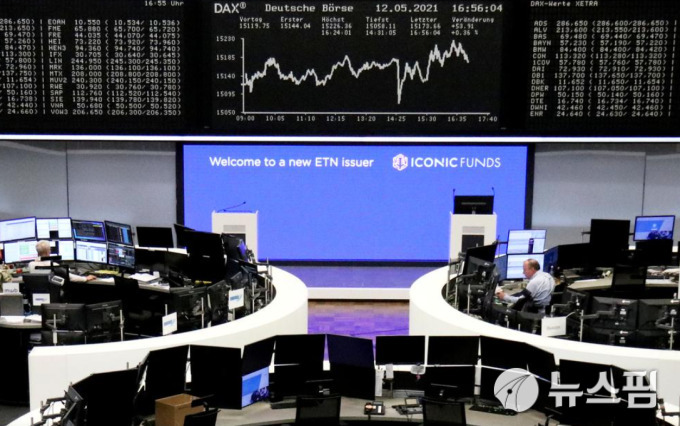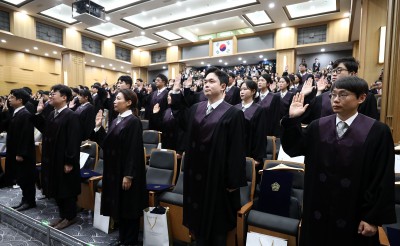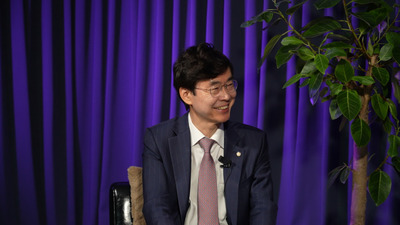Chairman Ben S. Bernanke
At the ACCIÓN Texas Summit on Microfinance in the United States, San Antonio, Texas
November 6, 2007
Microfinance in the United States
Last month I had the pleasure of meeting with someone very well known to this audience but not so well known to Americans generally: Dr. Muhammad Yunus. Perhaps more than any other individual, Dr. Yunus inspired the movement that has become known as microfinance. In 1976, Dr. Yunus founded the Grameen Bank in Bangladesh, which became one of the pioneers of the concept of offering small loans to people deemed too poor or insufficiently creditworthy to qualify for traditional bank loans.
The organization and the larger movement it helped spawn have financed the entrepreneurial aspirations of many thousands of people. The great majority of those who have benefited from Grameen Bank loans have been women, particularly poor rural women. Microfinance has offered borrowers, in Dr. Yunus's words, "a fair chance to unleash their energy and creativity" (Yunus, 2006). His innovative thinking and dedication to poverty relief through the extension of credit were honored in 2006 by the award of the Nobel Peace Prize. And the movement itself was recognized when the United Nations declared 2005 to be the International Year of Microcredit.1
The microfinance, or microcredit, movement has spread throughout the world--to other parts of Asia, Africa, Latin America, and, more recently, to the United States. Although the social and economic contexts differ widely across countries, the fundamental purpose of microfinance programs remains the same: to offer small loans and other financial services to low-income people to help them increase their incomes through entrepreneurship and self-employment.
Acción Texas has been an exemplar of the movement in the United States. I am very pleased to speak at your summit meeting today for many reasons, not the least of which is the opportunity to visit again with Janie Barrera, the president of Acción Texas. I had the pleasure of working with Janie when she was a member of the Federal Reserve Board's Consumer Advisory Council, which has been an invaluable resource for the Board over the years on all aspects of consumer protection regulation and community development initiatives. Soon after I became a member of the Board in 2002, Janie collaborated with the Federal Reserve Bank of Dallas to invite me and one of my fellow Board members, Susan Bies, to Brownsville, Texas. We toured local housing and community development projects and visited a small business that had gotten its start with the help of a microloan from Acción Texas.
In the remainder of my remarks I will speak about the development of the microfinance movement in the United States, putting it into an international context and discussing as well how it fits into the broader landscape of small business financing in this country. I will close with some thoughts on the challenges facing the U.S. movement as it continues to grow and mature.
The Development of the U.S. Microfinance Movement
Although the United States came relatively late to the microfinance movement, experimentation in the 1980s and 1990s laid the groundwork for the lively network of programs we see today. Acción has been at the forefront of the development of microfinance in the United States. Acción International began its microlending activities in Latin America in 1961 and established an affiliate organization in the United States, Acción USA, in 1991. Over the years, the U.S. Acción network has grown to become one of the country's largest microfinance providers. Since its founding, the U.S. Acción network has loaned $180 million to nearly 20,000 borrowers in thirty-five states.2
Of course, the operational details of U.S. microfinance programs differ significantly from those in overseas programs, but as I mentioned, they share similar goals and core values. As it does in developing countries, the microfinance movement in the United States seeks to expand economic opportunities for individuals and to foster community economic development by providing small loans and other business services to people who have been traditionally underserved by mainstream financial institutions. Loan features--including size, collateral requirements, and repayment terms--are typically more flexible than those of standard bank loans and are tailored to the needs of low- and moderate-income entrepreneurs.
In the United States, however, credit is only one part of the microfinance package. To a greater extent than overseas, microfinance programs here have expanded their offerings to deliver education, training, and various other services to nascent entrepreneurs. The goals of these supplemental activities are twofold: to improve the survival rate of the borrowers' start-up businesses and to mitigate credit risks for the lender. Several factors have driven the U.S. microfinance industry to diversify beyond simply lending. The complexity of the U.S. market for financial services requires greater financial management skills than are typically needed in developing countries. Here, even very small businesses are likely to have to deal with factors--such as taxes, licenses, and zoning laws--that can prove daunting hurdles to the inexperienced, aspiring business owner (Assanie and Virmani, 2006). By contrast, entrepreneurs in developing countries tend to operate in the informal sector, often out of the sight of regulators and tax authorities. Yet another difference between the U.S. context and that of the developing world is that, in the United States, aspiring entrepreneurs may have access to alternative sources of credit. Although they may not be able to obtain traditional small business loans, some can qualify for credit cards, home equity credit lines, or other alternatives to microcredit, whereas many of Grameen Bank's clients in Bangladesh, for example, have no such alternatives. Thus, while lending remains a very important part of U.S. microfinance programs, it is not as central to the broader mission as is typically the case in the developing world.
In helping local enterprises get under way, microfinance organizations help deliver the social benefits often associated with such businesses. For example, microentrepreneurs often involve their family members in their businesses, providing them valuable work experience; and extra income can confer important advantages on future generations, such as a chance for a better education. In addition, entrepreneurs may benefit communities and local economies in multiple ways, as this story of a woman who resides in one of Houston's poorest neighborhoods illustrates. Observing the lack of grocery stores in her community, she approached Acción Texas for funds to open a small organic food store and restaurant. With the help of the microloan, she created a viable business while also improving the options for food shopping in her community. She also provides various services, including neighborhood cooking classes that promote healthy eating habits.
The Place of Microfinance in the Landscape of Small Business Finance
Although comprehensive data on U.S. microfinance as a whole is scarce, many U.S. microfinance institutions measure and track their own performance. Acción Texas, for instance, reports that it loaned $42 million between 1994 and 2005. It estimates that those loans created 982 new jobs and generated about $78 million in economic activity (including earnings of about $25 million and local tax revenue of $4.5 million).3 Thus, despite gaps in the aggregate data, we can get some sense of how microfinance fits into the overall picture of small business finance.
Small businesses, generally defined as firms having fewer than 500 employees, have always played a vital role in the U.S. economy. Together, they employ more than half of private-sector workers and produce more than half of private-sector output (Board of Governors, 2007). The enterprises that microlenders finance are, of course, the very smallest of small businesses, but such firms make up a substantial share of the U.S. small business sector: 20 percent of small businesses in the United States have only one individual working in the firm, and 40 percent have two to four people working. Among these smaller firms, nearly 25 percent were founded or acquired by a new owner within the past four years.
Thus microenterprises not only provide a path to economic self-reliance for owner-entrepreneurs and benefit their local communities, but they are also important for the economy as a whole. There is some truth to the popular image of the successful firm which had its beginnings in someone's garage. Microenterprises can grow into small businesses, and small businesses can grow into large firms. Thus, microfinance plays the role of business incubator by compensating for the difficulties faced by very small firms and startups in obtaining credit from established financial intermediaries. These difficulties arise because lending to small businesses is typically considered riskier and more costly than lending to larger firms. Small businesses are often more susceptible to changes in the broader economy and generally have a much higher rate of failure than larger operations, although the survival rate of small firms increases with age (Knaup, 2005).Collateral may be used to help mitigate the risk to lenders, but the smallest and youngest firms often have few assets available to pledge. Besides being riskier, lending to small firms can be more expensive. It costs more per dollar loaned both to evaluate their credit applications and to monitor their ongoing performance. Many small businesses lack detailed balance sheets and other financial information used by underwriters in making lending decisions. And the small firm does not issue publicly traded debt or other securities whose values in the marketplace serve as a signal of its profit expectations.
Of course, despite these challenges, many smaller businesses do manage to obtain the credit and capital they need. Community banks, which rely on personal relationships and knowledge of the local market to assess credit risks, have long been a source of funding for small business. The development of more-sophisticated techniques in small business loan underwriting, including the use of credit scoring, has helped make small business lending more attractive to larger institutions as well (Cowan and Cowan, 2006). And research demonstrates that internal finance--that is, financing from the personal resources of owners, family, friends, and business associates--can help offset a lack of access to capital and is crucial to both new and established small enterprises (Rosen, 1998; Holtz-Eakin, Joulfaian, and Rosen, 1994a,b). For some potential low-income entrepreneurs, however, none of these options is feasible. Microfinance was designed to bridge this gap.
The Future of Microfinance in the United States
As I have emphasized, microenterprise development programs in the United States are about much more than the extension of credit, though access to credit remains a central concern. Many programs take a holistic approach, offering interconnected services that complement lending activities and are targeted at entrepreneurs at each stage of business development. Services being offered include up-front business training; specialized technical assistance; mentoring programs; sector-specific advice and support; networking opportunities; coordinated sales and marketing programs; and the development of formal links with banks, local community colleges, and other institutions (Edgcomb and Klein, 2005). Of course, many start-up businesses don't make it; that's an inescapable aspect of the risks that small business entrepreneurs face. But the services provided by microenterprise programs offer borrowers a strong foundation in the fundamentals of running a business and give their businesses a better chance to grow and flourish in a competitive marketplace.
These services benefit the lender by making the borrowers more creditworthy, but providing these services to budding entrepreneurs is labor intensive and requires considerable expertise. Because microfinance clients are rarely able to pay for these services, the costs have generally been underwritten by philanthropic efforts and public-private partnerships. Whether U.S. microfinance programs can become financially self-sustaining is a key question for the future.
Currently, microenterprise organizations are experimenting with business models in the effort to promote self-sustainability. Some are trying to enhance their profitability by offering a wider array of fee-based services, such as check cashing and the facilitation of remittances. Others have turned to technology to reduce their costs. Acción USA, for instance, has reduced transaction, underwriting, and servicing costs through an Internet lending initiative.4 It has also reduced its training costs through online and distance-learning courses. Another web-based effort, MicroMentor, matches inexperienced entrepreneurs with more experienced businesspeople, thereby providing important assistance to new business owners at a relatively low cost (http://www.micromentor.org/ Leaving the Board). The Association for Enterprise Opportunity, the principal trade association for microenterprise programs, serves as a forum for learning about innovations, developments, and best practices in this field (http://www.microenterpriseworks.org/ Leaving the Board).
Another promising avenue for the future of microfinance is the development of more partnerships with mainstream banking institutions. Mainstream banks typically don't offer the array of supportive services found at microlenders. But by partnering with a microlender that incubates very small businesses, mainstream institutions can gain new customers when the borrowers "graduate" from the microfinance program and seek larger loans. And these new customers will be more creditworthy borrowers because of the early support they received from the microfinance organization. Acción Texas and other microfinance organizations have established several mutually beneficial partnerships with large banking institutions. Such partnerships serve as two-way referral systems between the microlenders and large banks and help break down the barriers between mainstream institutions and underserved entrepreneurs.
Conclusion
To sum up, I want to affirm the important role that microfinance plays in bringing the opportunity for entrepreneurship to people who otherwise might not have it. Although some businesses will inevitably fall by the wayside, those that flourish and grow are likely to have better management and better long-term prospects than they would have without the support of microenterprise programs. Successful microbusinesses provide jobs as well as valuable products and services to their communities. Not least important, they can provide economic independence and self-reliance for the owner-entrepreneurs. The full benefits of this movement are difficult to calculate. Indeed, one important challenge for the future is to find ways to better measure the impact and cost effectiveness of microfinance programs. What is clear is that the microfinance movement has grown and adapted considerably during its short history in the United States. I hope that microfinance organizations will sustain their energetic spirit of innovation and experimentation as they strive to become more self-sufficient and adapt to our ever-changing economy.
References
Assanie, Laila, and Raghav Virmani (2006). "Incubating Microfinance: The Texas Border Experience," Federal Reserve Bank of Dallas, Southwest Economy (September/October), pp. 3-7.
Board of Governors of the Federal Reserve System (2007). Report to the Congress on the Availability of Credit to Small Businesses. Washington: Board of Governors of the Federal Reserve System, October.
Carr, James H., and Zhong Yi Tong, eds. (2002). Replicating Microfinance in the United States. Washington: Woodrow Wilson Center Press.
Cowan, Charles D., and Adrian M. Cowan (2006). "A Survey-Based Assessment of Financial Institution Use of Credit Scoring for Small Business Lending (690 KB PDF)." Washington: U.S. Small Business Administration, Office of Advocacy, November.
Edgcomb, Elaine L., and Joyce A. Klein (2005). "Opening Opportunities, Building Ownership: Fulfilling the Promise of Microenterprise in the United States." Leaving the BoardWashington: Microenterprise Fund for Innovation, Effectiveness, Learning and Development (FIELD) at the Aspen Institute, February, www.fieldus.org/Projects/MovingForward.html.
Holtz-Eakin, Douglas, David Joulfaian, and Harvey S. Rosen (1994a). "Entrepreneurial Decisions and Liquidity Constraints," Leaving the Board RAND Journal of Economics, vol. 24 (Summer), pp. 334-47.
_________ (1994b). "Sticking It Out: Entrepreneurial Survival and Liquidity Constraints," Leaving the Board Journal of Political Economy, vol. 102 (February), pp. 53-75.
Knaup, Amy E. (2005). "Survival and Longevity in the Business Employment Dynamics Data," Monthly Labor Review, vol. 128 (May), pp. 50-56.
Rosen, Harvey S. (1998). "The Future of Entrepreneurial Finance," Leaving the Board Journal of Banking and Finance, vol. 22 (August), pp. 1105-07.
Yunus, Muhammad (2006). "Nobel Lecture," Leaving the Board acceptance speech delivered at the Nobel Peace Prize ceremony, Oslo, December 10, www.nobelprize.org/nobel_prizes/peace/laureates.
Footnotes
1. Additional information is available on the United Nations website, "International Year of Microcredit," www.yearofmicrocredit.org. Leaving the Board
2. Acción USA, About Us: Our Impact, Leaving the Board www.accionusa.org/site/c.lvKVL9MUIsG/b.1388811/k.46F7/ACCIONs_Impact_on_Small_Businesses.htm.
3. Acción Texas, "Economic and Community Impact of Acción Texas, 1994-2005," Leaving the Board www.acciontexas.org/economic_impact_report.php.
4. Acción USA, Get a Loan Leaving the Board, https://secure.accionusa.org.
At the ACCIÓN Texas Summit on Microfinance in the United States, San Antonio, Texas
November 6, 2007
Microfinance in the United States
Last month I had the pleasure of meeting with someone very well known to this audience but not so well known to Americans generally: Dr. Muhammad Yunus. Perhaps more than any other individual, Dr. Yunus inspired the movement that has become known as microfinance. In 1976, Dr. Yunus founded the Grameen Bank in Bangladesh, which became one of the pioneers of the concept of offering small loans to people deemed too poor or insufficiently creditworthy to qualify for traditional bank loans.
The organization and the larger movement it helped spawn have financed the entrepreneurial aspirations of many thousands of people. The great majority of those who have benefited from Grameen Bank loans have been women, particularly poor rural women. Microfinance has offered borrowers, in Dr. Yunus's words, "a fair chance to unleash their energy and creativity" (Yunus, 2006). His innovative thinking and dedication to poverty relief through the extension of credit were honored in 2006 by the award of the Nobel Peace Prize. And the movement itself was recognized when the United Nations declared 2005 to be the International Year of Microcredit.1
The microfinance, or microcredit, movement has spread throughout the world--to other parts of Asia, Africa, Latin America, and, more recently, to the United States. Although the social and economic contexts differ widely across countries, the fundamental purpose of microfinance programs remains the same: to offer small loans and other financial services to low-income people to help them increase their incomes through entrepreneurship and self-employment.
Acción Texas has been an exemplar of the movement in the United States. I am very pleased to speak at your summit meeting today for many reasons, not the least of which is the opportunity to visit again with Janie Barrera, the president of Acción Texas. I had the pleasure of working with Janie when she was a member of the Federal Reserve Board's Consumer Advisory Council, which has been an invaluable resource for the Board over the years on all aspects of consumer protection regulation and community development initiatives. Soon after I became a member of the Board in 2002, Janie collaborated with the Federal Reserve Bank of Dallas to invite me and one of my fellow Board members, Susan Bies, to Brownsville, Texas. We toured local housing and community development projects and visited a small business that had gotten its start with the help of a microloan from Acción Texas.
In the remainder of my remarks I will speak about the development of the microfinance movement in the United States, putting it into an international context and discussing as well how it fits into the broader landscape of small business financing in this country. I will close with some thoughts on the challenges facing the U.S. movement as it continues to grow and mature.
The Development of the U.S. Microfinance Movement
Although the United States came relatively late to the microfinance movement, experimentation in the 1980s and 1990s laid the groundwork for the lively network of programs we see today. Acción has been at the forefront of the development of microfinance in the United States. Acción International began its microlending activities in Latin America in 1961 and established an affiliate organization in the United States, Acción USA, in 1991. Over the years, the U.S. Acción network has grown to become one of the country's largest microfinance providers. Since its founding, the U.S. Acción network has loaned $180 million to nearly 20,000 borrowers in thirty-five states.2
Of course, the operational details of U.S. microfinance programs differ significantly from those in overseas programs, but as I mentioned, they share similar goals and core values. As it does in developing countries, the microfinance movement in the United States seeks to expand economic opportunities for individuals and to foster community economic development by providing small loans and other business services to people who have been traditionally underserved by mainstream financial institutions. Loan features--including size, collateral requirements, and repayment terms--are typically more flexible than those of standard bank loans and are tailored to the needs of low- and moderate-income entrepreneurs.
In the United States, however, credit is only one part of the microfinance package. To a greater extent than overseas, microfinance programs here have expanded their offerings to deliver education, training, and various other services to nascent entrepreneurs. The goals of these supplemental activities are twofold: to improve the survival rate of the borrowers' start-up businesses and to mitigate credit risks for the lender. Several factors have driven the U.S. microfinance industry to diversify beyond simply lending. The complexity of the U.S. market for financial services requires greater financial management skills than are typically needed in developing countries. Here, even very small businesses are likely to have to deal with factors--such as taxes, licenses, and zoning laws--that can prove daunting hurdles to the inexperienced, aspiring business owner (Assanie and Virmani, 2006). By contrast, entrepreneurs in developing countries tend to operate in the informal sector, often out of the sight of regulators and tax authorities. Yet another difference between the U.S. context and that of the developing world is that, in the United States, aspiring entrepreneurs may have access to alternative sources of credit. Although they may not be able to obtain traditional small business loans, some can qualify for credit cards, home equity credit lines, or other alternatives to microcredit, whereas many of Grameen Bank's clients in Bangladesh, for example, have no such alternatives. Thus, while lending remains a very important part of U.S. microfinance programs, it is not as central to the broader mission as is typically the case in the developing world.
In helping local enterprises get under way, microfinance organizations help deliver the social benefits often associated with such businesses. For example, microentrepreneurs often involve their family members in their businesses, providing them valuable work experience; and extra income can confer important advantages on future generations, such as a chance for a better education. In addition, entrepreneurs may benefit communities and local economies in multiple ways, as this story of a woman who resides in one of Houston's poorest neighborhoods illustrates. Observing the lack of grocery stores in her community, she approached Acción Texas for funds to open a small organic food store and restaurant. With the help of the microloan, she created a viable business while also improving the options for food shopping in her community. She also provides various services, including neighborhood cooking classes that promote healthy eating habits.
The Place of Microfinance in the Landscape of Small Business Finance
Although comprehensive data on U.S. microfinance as a whole is scarce, many U.S. microfinance institutions measure and track their own performance. Acción Texas, for instance, reports that it loaned $42 million between 1994 and 2005. It estimates that those loans created 982 new jobs and generated about $78 million in economic activity (including earnings of about $25 million and local tax revenue of $4.5 million).3 Thus, despite gaps in the aggregate data, we can get some sense of how microfinance fits into the overall picture of small business finance.
Small businesses, generally defined as firms having fewer than 500 employees, have always played a vital role in the U.S. economy. Together, they employ more than half of private-sector workers and produce more than half of private-sector output (Board of Governors, 2007). The enterprises that microlenders finance are, of course, the very smallest of small businesses, but such firms make up a substantial share of the U.S. small business sector: 20 percent of small businesses in the United States have only one individual working in the firm, and 40 percent have two to four people working. Among these smaller firms, nearly 25 percent were founded or acquired by a new owner within the past four years.
Thus microenterprises not only provide a path to economic self-reliance for owner-entrepreneurs and benefit their local communities, but they are also important for the economy as a whole. There is some truth to the popular image of the successful firm which had its beginnings in someone's garage. Microenterprises can grow into small businesses, and small businesses can grow into large firms. Thus, microfinance plays the role of business incubator by compensating for the difficulties faced by very small firms and startups in obtaining credit from established financial intermediaries. These difficulties arise because lending to small businesses is typically considered riskier and more costly than lending to larger firms. Small businesses are often more susceptible to changes in the broader economy and generally have a much higher rate of failure than larger operations, although the survival rate of small firms increases with age (Knaup, 2005).Collateral may be used to help mitigate the risk to lenders, but the smallest and youngest firms often have few assets available to pledge. Besides being riskier, lending to small firms can be more expensive. It costs more per dollar loaned both to evaluate their credit applications and to monitor their ongoing performance. Many small businesses lack detailed balance sheets and other financial information used by underwriters in making lending decisions. And the small firm does not issue publicly traded debt or other securities whose values in the marketplace serve as a signal of its profit expectations.
Of course, despite these challenges, many smaller businesses do manage to obtain the credit and capital they need. Community banks, which rely on personal relationships and knowledge of the local market to assess credit risks, have long been a source of funding for small business. The development of more-sophisticated techniques in small business loan underwriting, including the use of credit scoring, has helped make small business lending more attractive to larger institutions as well (Cowan and Cowan, 2006). And research demonstrates that internal finance--that is, financing from the personal resources of owners, family, friends, and business associates--can help offset a lack of access to capital and is crucial to both new and established small enterprises (Rosen, 1998; Holtz-Eakin, Joulfaian, and Rosen, 1994a,b). For some potential low-income entrepreneurs, however, none of these options is feasible. Microfinance was designed to bridge this gap.
The Future of Microfinance in the United States
As I have emphasized, microenterprise development programs in the United States are about much more than the extension of credit, though access to credit remains a central concern. Many programs take a holistic approach, offering interconnected services that complement lending activities and are targeted at entrepreneurs at each stage of business development. Services being offered include up-front business training; specialized technical assistance; mentoring programs; sector-specific advice and support; networking opportunities; coordinated sales and marketing programs; and the development of formal links with banks, local community colleges, and other institutions (Edgcomb and Klein, 2005). Of course, many start-up businesses don't make it; that's an inescapable aspect of the risks that small business entrepreneurs face. But the services provided by microenterprise programs offer borrowers a strong foundation in the fundamentals of running a business and give their businesses a better chance to grow and flourish in a competitive marketplace.
These services benefit the lender by making the borrowers more creditworthy, but providing these services to budding entrepreneurs is labor intensive and requires considerable expertise. Because microfinance clients are rarely able to pay for these services, the costs have generally been underwritten by philanthropic efforts and public-private partnerships. Whether U.S. microfinance programs can become financially self-sustaining is a key question for the future.
Currently, microenterprise organizations are experimenting with business models in the effort to promote self-sustainability. Some are trying to enhance their profitability by offering a wider array of fee-based services, such as check cashing and the facilitation of remittances. Others have turned to technology to reduce their costs. Acción USA, for instance, has reduced transaction, underwriting, and servicing costs through an Internet lending initiative.4 It has also reduced its training costs through online and distance-learning courses. Another web-based effort, MicroMentor, matches inexperienced entrepreneurs with more experienced businesspeople, thereby providing important assistance to new business owners at a relatively low cost (http://www.micromentor.org/ Leaving the Board). The Association for Enterprise Opportunity, the principal trade association for microenterprise programs, serves as a forum for learning about innovations, developments, and best practices in this field (http://www.microenterpriseworks.org/ Leaving the Board).
Another promising avenue for the future of microfinance is the development of more partnerships with mainstream banking institutions. Mainstream banks typically don't offer the array of supportive services found at microlenders. But by partnering with a microlender that incubates very small businesses, mainstream institutions can gain new customers when the borrowers "graduate" from the microfinance program and seek larger loans. And these new customers will be more creditworthy borrowers because of the early support they received from the microfinance organization. Acción Texas and other microfinance organizations have established several mutually beneficial partnerships with large banking institutions. Such partnerships serve as two-way referral systems between the microlenders and large banks and help break down the barriers between mainstream institutions and underserved entrepreneurs.
Conclusion
To sum up, I want to affirm the important role that microfinance plays in bringing the opportunity for entrepreneurship to people who otherwise might not have it. Although some businesses will inevitably fall by the wayside, those that flourish and grow are likely to have better management and better long-term prospects than they would have without the support of microenterprise programs. Successful microbusinesses provide jobs as well as valuable products and services to their communities. Not least important, they can provide economic independence and self-reliance for the owner-entrepreneurs. The full benefits of this movement are difficult to calculate. Indeed, one important challenge for the future is to find ways to better measure the impact and cost effectiveness of microfinance programs. What is clear is that the microfinance movement has grown and adapted considerably during its short history in the United States. I hope that microfinance organizations will sustain their energetic spirit of innovation and experimentation as they strive to become more self-sufficient and adapt to our ever-changing economy.
References
Assanie, Laila, and Raghav Virmani (2006). "Incubating Microfinance: The Texas Border Experience," Federal Reserve Bank of Dallas, Southwest Economy (September/October), pp. 3-7.
Board of Governors of the Federal Reserve System (2007). Report to the Congress on the Availability of Credit to Small Businesses. Washington: Board of Governors of the Federal Reserve System, October.
Carr, James H., and Zhong Yi Tong, eds. (2002). Replicating Microfinance in the United States. Washington: Woodrow Wilson Center Press.
Cowan, Charles D., and Adrian M. Cowan (2006). "A Survey-Based Assessment of Financial Institution Use of Credit Scoring for Small Business Lending (690 KB PDF)." Washington: U.S. Small Business Administration, Office of Advocacy, November.
Edgcomb, Elaine L., and Joyce A. Klein (2005). "Opening Opportunities, Building Ownership: Fulfilling the Promise of Microenterprise in the United States." Leaving the BoardWashington: Microenterprise Fund for Innovation, Effectiveness, Learning and Development (FIELD) at the Aspen Institute, February, www.fieldus.org/Projects/MovingForward.html.
Holtz-Eakin, Douglas, David Joulfaian, and Harvey S. Rosen (1994a). "Entrepreneurial Decisions and Liquidity Constraints," Leaving the Board RAND Journal of Economics, vol. 24 (Summer), pp. 334-47.
_________ (1994b). "Sticking It Out: Entrepreneurial Survival and Liquidity Constraints," Leaving the Board Journal of Political Economy, vol. 102 (February), pp. 53-75.
Knaup, Amy E. (2005). "Survival and Longevity in the Business Employment Dynamics Data," Monthly Labor Review, vol. 128 (May), pp. 50-56.
Rosen, Harvey S. (1998). "The Future of Entrepreneurial Finance," Leaving the Board Journal of Banking and Finance, vol. 22 (August), pp. 1105-07.
Yunus, Muhammad (2006). "Nobel Lecture," Leaving the Board acceptance speech delivered at the Nobel Peace Prize ceremony, Oslo, December 10, www.nobelprize.org/nobel_prizes/peace/laureates.
Footnotes
1. Additional information is available on the United Nations website, "International Year of Microcredit," www.yearofmicrocredit.org. Leaving the Board
2. Acción USA, About Us: Our Impact, Leaving the Board www.accionusa.org/site/c.lvKVL9MUIsG/b.1388811/k.46F7/ACCIONs_Impact_on_Small_Businesses.htm.
3. Acción Texas, "Economic and Community Impact of Acción Texas, 1994-2005," Leaving the Board www.acciontexas.org/economic_impact_report.php.
4. Acción USA, Get a Loan Leaving the Board, https://secure.accionusa.org.
 영상
영상






















